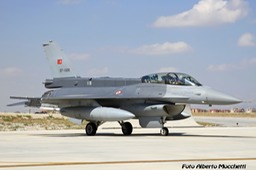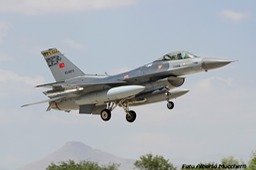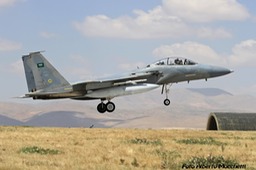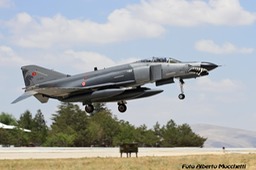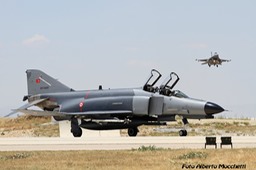Navigazione nel sito[Salta]
- Home
- PICTURES & REPORTS
- 2024
- 2023
- 2022
- 2021
- 2019
- 2018
- 2017
- 2016
- 2015
- 2014
- 2013
- TLP 2013-5 ALBACETE (ES)
- FRISIAN FLAG 2013
- ANATOLIAN EAGLE 2013-2
- STAR VEGA 2013
- WINTER HIDE 2013
- 2012
- 2011
- 2010
- 2009
- 2008
- 2007
- 2006
- 2005
- VIDEOS
- PUBLISHED WORKS
- ABOUT US
- CONTACT US
Sidebar[Skip]
______________________________

The Turkish Air Force in 2013 scheduled at Konya Air Base three Anatolian Eagle Exercises, with national and international participants. The aim of these exercises is to give the participants the perfect venue for maintaining and excelling operation readiness.
Aviation-Shots visited Anatolian Eagle 2013-2 in June 2013, the second one in the year and the first and only having international participants.
Participating countries and types aircrafts are:
-Turkish Air Force F 16C/D (x27), F 4E (x8), KC 135R (x1), C 130H (x1), CN 235 (x1)
-Royal Saudi Air Force F 15C/D (x8)
-United Arab Emirates Air Force F 16E (x6)
-NATO E 3A (x2)
The number of personnel: 540 Turkish, 525 Foreign
The purpose of Anatolian Eagle 2013/2 are:
-To train fighters for victory
-To systematically test and evaluable the fighters combat readiness statutes and to manage the tactical training progress.
-To build a background and knowledge base in order to make research on tactical aeroneutics.
-To make research to allow fighters elements of the Turkish Air Force Command to reach the military goals in the shortest time and with minimum resource and effort.
-To support the definition of operational requirements, supply and R&D activities.
-To allocate training environment in order to fulfill the requirements of the Turkish Air Force Command.
-To support the tests of exiting/developed/future weapon/aircraft systems.
Anatolian Eagle is one of the largest and most complex joint air force exercises in the world, paralleled only by Red Flag, held periodically at Nevada's Nellis Air Force Base, and the annual Maple Flag exercise in Canada.
The task of hosting Anatolian Eagle is borne by the 3rd Main Turkish Jet Base in Konya. This base, which sits on the periphery of the vast Konya plain in Central Anatolia, a sparsely populated flat basin, is an ideal choice for an exercise of this magnitude.
The extensive training area for Anatolian Eagle was established between 1998 and 2001. It is 100 miles in length and 95 miles in width, with five separate smaller zones ranging between 1.5 and 3.2 square nautical miles. The grounds consist of a command and control center, a main briefing auditorium, and four separate buildings for the participant groups known respectively as the White, Blue 1, Blue 2, and Red Forces.
The White Forces, composed of TUAF personnel and allied observers, are in charge of planning; they develop training and intelligence scenarios, establish levels of training, plan air tasking orders, monitor real-time executed training, and direct training from the ground. The Blue Forces are composed of allied air forces as well as Turkish army and naval units. The Red Forces are TUAF units: one squadron of F-16 and F-5/2000 flyers along with a surface-to-air missile unit.
Anatolian Eagle provides the most accurate simulated war environment possible. Its training grounds are equipped with the latest technology, including an electronic warfare area; real-time data concerning aircraft movement is relayed to ground control through air combat maneuvering instrumentation pods. Anatolian Eagle enables the TUAF to introduce and assess new weapons systems, while testing the knowledge and capability of participants by presenting various kinds of surface-to-air threats.
Training sessions, two weeks in duration, are held four times a year: one for Turkish forces and three with multinational participation. Since the beginning of 2001, eight training sessions have been completed, with the participation of 461 aircraft and 4,275 personnel.
The success of Anatolian Eagle is apparent in the fact that since its inception, the number of participants in the exercise has increased dramatically.
NATO. Turkey regards NATO, along with the UN, as the vital pact for the maintenance of international peace and order. As one of the unique air-to-air, air-to-ground, and electronic warfare training exercises in the world, Anatolian Eagle is the only event of its kind in the region with both NATO and non-NATO participants; the exercise provides NATO-standard training (allowing non-NATO countries to study NATO benchmarks) while promoting interoperability among forces.
(Source: Turkish Air Force Public Affairs/Media Office)
Aviation-shots would like to thank all the Turkish Air force personell at Konya AFB for their great cooperation in making this photo/video report possible.


